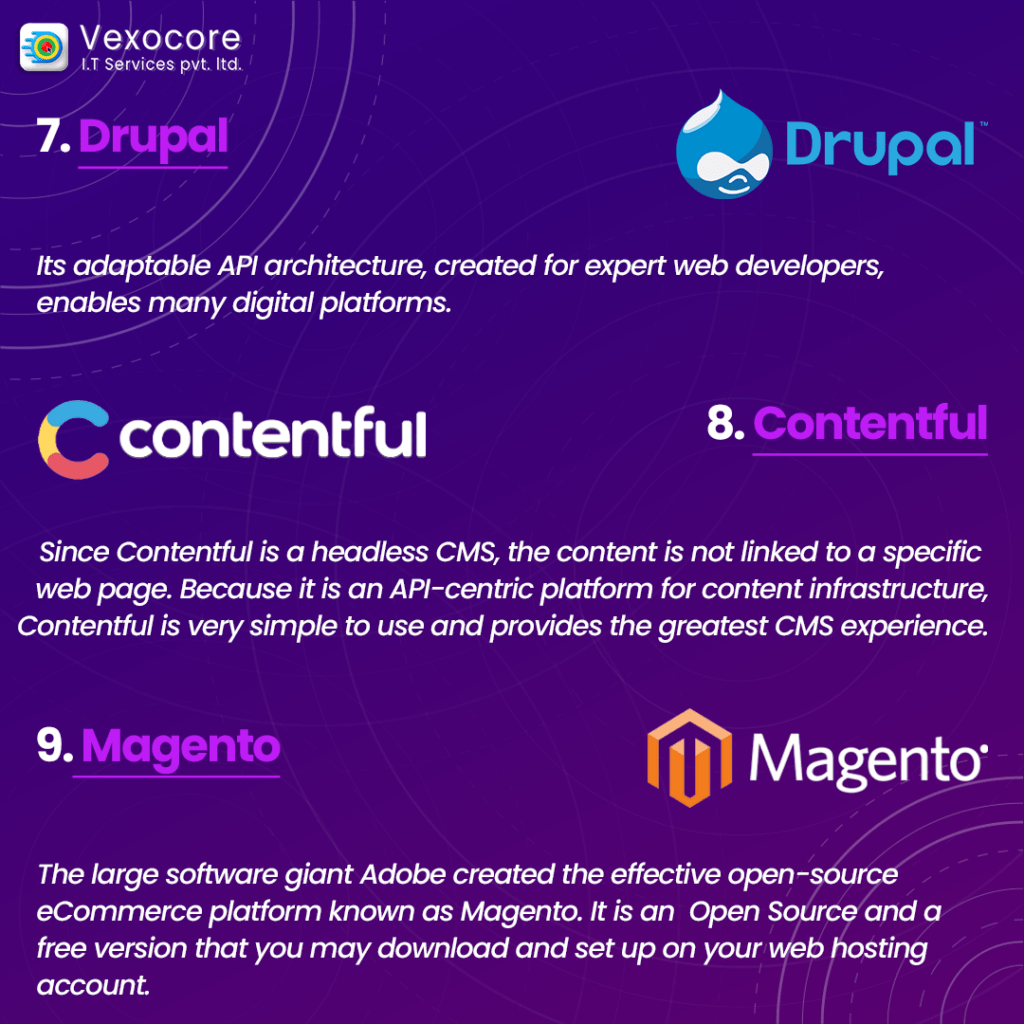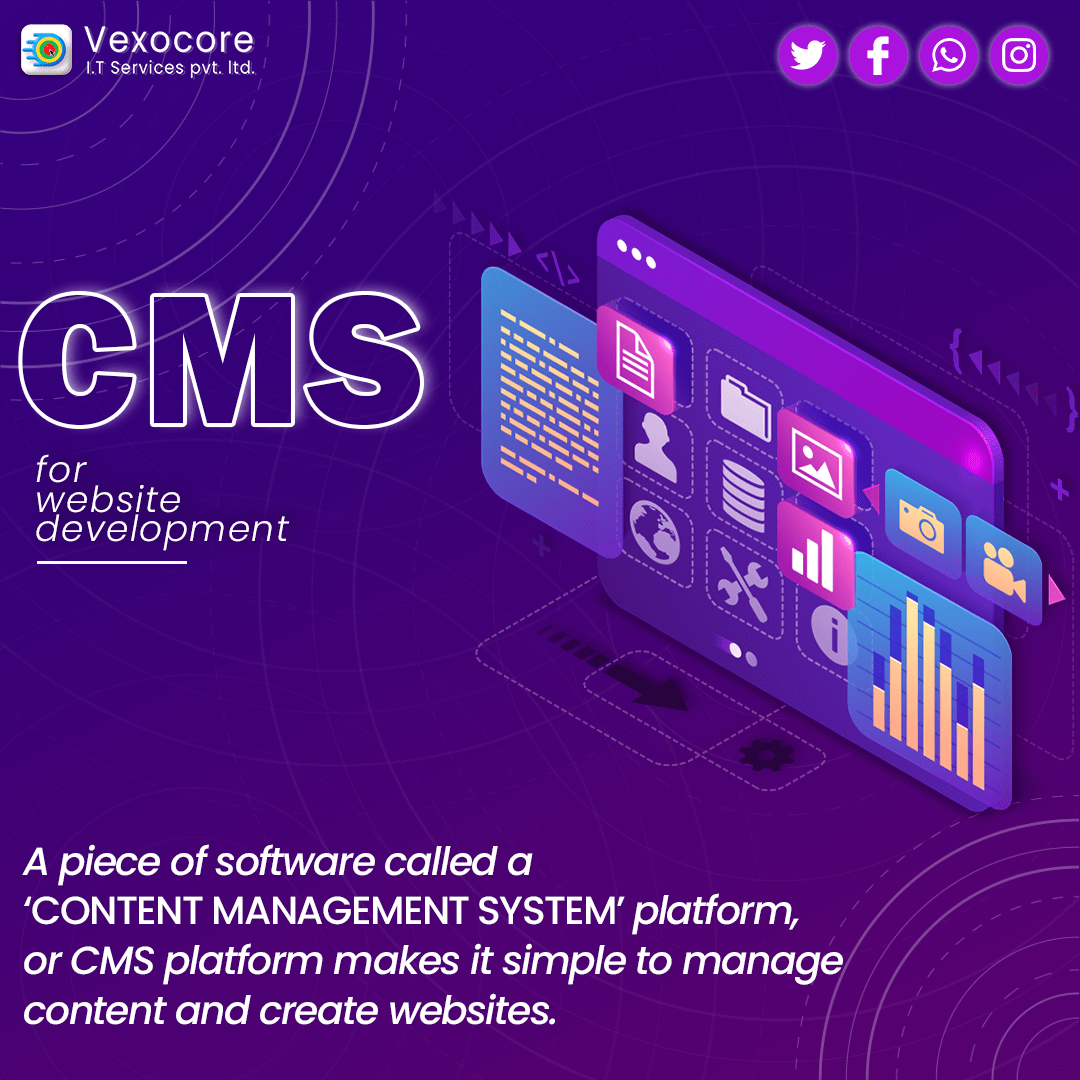What is a CMS Platform?

A piece of software called a content management system platform, or CMS platform makes it simple to manage content and create websites. Web pages are often made using programming languages like HTML, JavaScript, and CSS. If you wanted to build a website without using a CMS platform, you would need to be an expert in these languages and write a lot of code.
A content management system is used by more than 64 million active websites at the moment (CMS). Users don’t need to write website code from scratch to develop websites or manage their content when using a CMS. There are currently between 1000 and 2000 content management systems in use, and the number is rising. Yet, choosing the incorrect CMS platform when building a website would only make things more challenging.
Currently, more than 64 million active websites employ a content management system (CMS). While using a CMS, users may create websites and manage their content without having to write any website code from scratch. Between 1000 and 2000 content management systems are in use right now, and that figure is growing. Yet, picking the wrong CMS platform for developing a website would just make matters more difficult.



1. WordPress.
WordPress.org is our #1 choice for the best CMS platform. WordPress is the most used content management system in the world, powering over 42% of all websites. WordPress is an open-source application recognized for its flexibility and scalability. Also, users can create any type of website using its library of more than 58,000 WordPress plugins.
pros:
•Prices can be adjusted to fit different needs and budgets.
•Use a wide selection of excellent free WordPress plugins and themes to customize.
•You are completely free to monetize your website however you see fit.
•As an open source, WordPress has a sizable and helpful community. To obtain assistance with any issues you have, you can join groups.
Cons:
•You’ll be responsible for setting up your domain name, and hosting, and managing security and backups on your own.
•Because WordPress is a hacker’s haven, you must keep up with updates. If you miss even one update, you can be vulnerable to new forms of assault.
2. Joomla.
Joomla is a popular free open source CMS platform with a huge selection of templates and add-ons. It is free to use, but you need hosting and a domain name. A new platform and a store are also included in Joomla, an open-source CMS that powers over 2% of all websites, in addition to his portfolio. In comparison to competing CMS platforms, its core software offers more functionality out of the gate, such as its multilingual features.
Pros:
•Effectively manage a website with hundreds of subpages.
•Similar to WordPress, Joomla is an open basis, and there is a tonne of community support available if you run into issues.
•Use two-factor authentication to ward off intrusions.
Cons:
•You’ll have to set up your hosting and domain name and handle things like security and backups on your own.
•incompatibility between various plugins, extensions, and modules.
3. Magnolia.
Magnolia is an open-source content management system that was developed to provide people with access to technologies that support difficult digital experiences.
The platform is an enterprise-grade piece of software with exceptional dependability and stability because it is written in Java. For tech goods and large companies that can devote more effort to developing many platforms, this CMS is excellent.
Pros:
•Editing pages and customizing material is simple.
•Excellent ability to scale up a site.
Cons:
•Absence of community and support; several features require knowledge of the Java programming language.
4. Shopify.
Another integrated hosted CMS platform is Shopify. If you operate both an online and a physical business, it allows in-store sales, which is fantastic. There is no need for you to purchase hosting, set up any software, or handle backups and upgrades. It offers a simple drag-and-drop user interface.
Pros:
•Shopify Payments, an integrated payment system, allows you to accept credit and debit cards. One of Shopify’s default payment processors is also PayPal.
•Shopify offers live chat, email, phone, and even Twitter help around the clock. Also, there is a tonne of content available, including printed instruction manuals and instructional videos.
Cons:
•If you wish to add a lot of third-party apps to your store, your fees may end up being rather high.
5. HubSpot CMS Hub.
For marketers and companies looking to increase website conversions, HubSpot created the CMS hub. The HubSpot CMS hub provides all the marketing automation, sales, service, and operations tools you need to expand your business or maintain your website because it is based on HubSpot’s CRM platform.
Pros:
•By leveraging the platform’s intelligent content features, you may tailor your web pages to individual visitors.
•The HubSpot CMS is simple to use. Even those with a basic understanding of HTML may manage it.
•You can personalize your website as you like thanks to the serverless features, adaptable theme options, and command line tools.
Cons:
•A small selection of plugins and themes.
•HubSpot CMS is less suited for websites that require more customization, like eCommerce, because of its restricted selection of plugins and themes.
6. Sitecore.
You can sell your product in the context of recent and past consumer interactions thanks to the Sitecore CMS. Additionally, it guarantees a unique and pertinent consumer experience for your business.
Pros :
•Sitecore features smart components and is cross-browser compatible, so your website will function correctly in any browser.
•Because of its user-friendly interface, Sitecore makes managing massive websites simple.
•Your websites and content can be effectively managed and optimized with the aid of Sitecore’s integrated online marketing suite.
Cons:
•Sitecore is more expensive than competing platforms.
7. Drupal.
Its adaptable API architecture, created for expert web developers, enables many digital platforms. Drupal optimizes its built-in features for improved performance and security when compared to Joomla and WordPress.
Pros:
•Built-in modules aid in enhancing a site’s functionality.
•less susceptible to security risks because the CMS software frequently performs security tests.
Cons:
•Drupal management can take a lot of time, especially when upgrading to a new version.
•Need familiarity with HTML, CSS, and PHP code.
8. Contentful.
Since Contentful is a headless CMS, the content is not linked to a specific web page. Because it is an API-centric platform for content infrastructure, Contentful is very simple to use and provides the greatest CMS experience. For non-technical users, the platform has a steep learning curve, but you may save any data, including text and images.
Pros :
•It can accommodate a variety of content.
•Use Contentful to save all of the material you produce, then share it across all digital platforms.
•Can be adapted to any digital platform, including mobile apps and online browsers.
Cons:
•Technical expertise is necessary for creating content for several platforms.
•Without changing the real layout, concentrate on the backend.
•The learning curve for Contentful is severe, and producing content needs a tremendous amount of technical expertise.
9. Magento.
The large software giant Adobe created the effective open-source eCommerce platform known as Magento. It is an Open Source and a free version that you may download and set up on your web hosting account. You have the option to purchase Magento Commerce if you’d like. Although it is hosted for you and comes with complete support, the cost is prohibitive.
Pros :
•Magento is used by some incredibly well-known companies, including Nike, Ford, and Coca-Cola.
•Cons Magento is quite adaptable, and there is a tonne of third-party extensions you can employ to add more functionality.
Cons :
•Finding competent Magento developers can be challenging, and hiring them can be highly expensive.
•Magento may appear overwhelming if you’re just getting started in eCommerce.
10. Squarespace.
Creative people frequently utilize Squarespace to display their portfolios. It is the engine that powers more than 2,927,000 websites worldwide and is the best CMS platform for beginners. It is used by DoorDash, StyleCaster, UberEatEats, and Etsy. A 4% market share belongs to the Squarespace CMS.
Pros:
•The Squarespace drag-and-drop website builder does not require any installation on the hosting server, which is a pro.
•Squarespace has clean, contemporary themes that put simplicity and elegance at the forefront of their design language.
•The CMS includes support, SSL certificates, and other capabilities out of the box.
Cons:
•Unlike WordPress, Squarespace doesn’t have as many customization choices. So, Squarespace might not be the best CMS for you if you’re an established business looking for a customized website.
We suggest using platforms like Vexocore for website creation in the context of India. The well-known IT company Vexocore offers features like data security, digital marketing, and nearly everything else you might need for website construction.





